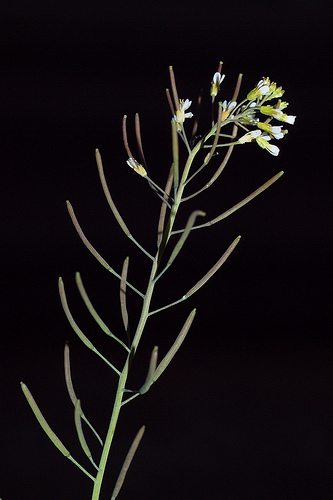Widely used as a model for plant research, Arabidopsis thaliana was the first plant to have its genome completely sequenced. However, there is still much to learn about this plant, including the function of its many DNA conserved noncoding sequences (CNSs). These regions hold key roles in activating certain traits during plant development, but why or how they are conserved is not yet clear.

A. thaliana, also known as thale cress, provides insight to the regulatory mechanisms in plant DNA.
To help answer these questions, the genomes of multiple plants, including A. thaliana and two others sequenced by the DOE Joint Genome Institute, were compared in a study published in Nature Genetics on June 30, 2013. Researchers wanted to better understand the factors that account for reduced diversity and gene mutation rate in a species. The team compared three newly sequenced genomes with six previously sequenced genomes including Capsella rubella and another brassica species, the salt-tolerant Eutrema salsugineum.
Scientists identified 90,000 noncoding base pairs, which account for 17 percent of A. thaliana’s genome. The study yielded the first high-resolution, genome-wide map of noncoding regions. They concluded that the plants retained these sequences because they are vital in the evolution of genome organization. This information, along with ongoing research, will enable scientists to further understand the sequences in plant genomes that control the activation of certain traits in the development of these plants.